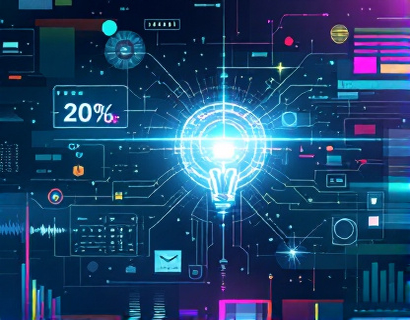Accessible Learning Resources: Empowering Students and Lifelong Learners with Comprehensive Educational Tools
In the digital age, the importance of accessible learning resources cannot be overstated. The proliferation of technology has opened up new avenues for education, making it more inclusive and accessible to a broader audience. This article delves into the significance of comprehensive educational tools that cater to the diverse needs of students and lifelong learners. By exploring the various types of resources available and the benefits they offer, we aim to highlight how these tools can empower individuals to achieve their educational goals and foster a lifelong passion for learning.
The concept of accessible learning resources encompasses a wide range of materials designed to accommodate different learning styles and abilities. These resources are not only crucial for students with disabilities but also for anyone seeking a more personalized and effective learning experience. The foundation of accessible education lies in the recognition that every individual has unique needs and that education should be adaptable to meet those needs.
Types of Accessible Learning Resources
One of the most fundamental forms of accessible learning resources is the digital article. Articles provide concise and focused information on various topics, making them ideal for quick reference and in-depth study. Digital articles can be easily accessed through online platforms, allowing learners to read and absorb information at their own pace. Moreover, many digital article platforms offer features such as text-to-speech, adjustable font sizes, and high-contrast modes, which enhance readability for users with visual impairments.
E-books represent another significant category of accessible learning resources. Unlike traditional printed books, e-books can be customized to suit individual reading preferences. Features like adjustable text size, background color, and font type make e-books more readable for people with dyslexia or other reading difficulties. Additionally, e-books often come with built-in dictionaries and translation tools, facilitating understanding for non-native speakers and enhancing the learning experience.
Interactive courses are perhaps the most engaging form of accessible learning resources. These courses combine multimedia elements such as videos, quizzes, and interactive simulations to create a dynamic learning environment. For students who benefit from hands-on learning, interactive courses provide a structured yet flexible approach to acquiring new skills and knowledge. Accessibility features in these courses, such as closed captions for videos and keyboard-navigable interfaces, ensure that all learners can participate fully.
Benefits of Accessible Learning Resources
The benefits of accessible learning resources are manifold. Firstly, they promote inclusivity by ensuring that all learners, regardless of their abilities, have equal access to educational content. This inclusivity fosters a sense of community and belonging, which is essential for motivation and engagement. When students feel that their needs are recognized and accommodated, they are more likely to participate actively in their learning journey.
Accessible learning resources also cater to diverse learning styles, which is crucial for effective education. Visual learners, for instance, benefit from infographics and video tutorials, while auditory learners may prefer podcasts and audiobooks. Kinesthetic learners, who learn best through hands-on activities, can engage with interactive simulations and practical exercises. By providing a variety of formats, accessible learning resources ensure that each learner can find the method that works best for them.
Furthermore, accessible learning resources support lifelong learning by making education accessible beyond the traditional classroom setting. In today's fast-paced world, continuous learning is essential for personal and professional growth. With the convenience of digital resources, learners can access educational materials anytime and anywhere, fitting learning into their busy schedules. This flexibility is particularly beneficial for working professionals and parents who may have limited time for formal education.
Creating a Supportive Learning Environment
A supportive learning environment is crucial for the success of accessible learning resources. This environment is built on several key principles. First, it requires a commitment to universal design for learning (UDL), which involves creating instructional materials and activities that are accessible to all students from the outset. UDL principles guide the development of resources that are flexible and adaptable, ensuring that they can be used in multiple ways to meet the diverse needs of learners.
Another important aspect is the role of technology in facilitating accessibility. Advances in technology have led to the development of tools and software that can transform the learning experience for individuals with disabilities. For example, screen readers convert text into speech, enabling visually impaired students to access digital content. Similarly, speech recognition software allows students with physical disabilities to interact with computers and complete assignments without relying on manual input.
Institutions and educators play a vital role in creating a supportive learning environment. They must be proactive in identifying and addressing the needs of all students, providing necessary accommodations and support services. This includes training teachers and staff on accessibility best practices and ensuring that physical and digital infrastructure is accessible. By fostering a culture of inclusivity and support, educational institutions can maximize the benefits of accessible learning resources.
Case Studies and Success Stories
To illustrate the impact of accessible learning resources, consider a few success stories. One notable example is a student with dyslexia who struggled with traditional reading materials. By using an e-book reader with text-to-speech functionality, this student was able to engage with complex texts independently and improve their comprehension skills. The ability to adjust font sizes and background colors further enhanced their reading experience, reducing eye strain and distractions.
Another success story involves a group of adult learners who enrolled in an online interactive course on digital marketing. The course included video tutorials, interactive quizzes, and a discussion forum, catering to different learning preferences. The closed captions and keyboard-navigable interface ensured that all participants, including those with hearing impairments, could fully engage with the material. As a result, the learners not only acquired valuable skills but also formed a supportive community that motivated them to continue their educational journey.
These examples demonstrate that accessible learning resources can significantly enhance the educational experience for students with diverse needs. By providing tailored support and flexible learning options, these resources empower learners to overcome barriers and achieve their goals.
Challenges and Future Directions
Despite the numerous benefits, there are challenges associated with implementing accessible learning resources. One major challenge is the initial cost of developing and maintaining high-quality, accessible content. Creating resources that meet accessibility standards requires specialized knowledge and resources, which can be a barrier for some institutions.
Another challenge is ensuring that all learners are aware of and can effectively utilize accessible learning resources. This requires ongoing education and outreach to both students and educators about the availability and benefits of these resources. Additionally, there is a need for continuous improvement and innovation in accessibility technologies to keep pace with evolving educational needs.
Looking to the future, the integration of artificial intelligence (AI) and machine learning (ML) holds great promise for enhancing accessible learning resources. AI can personalize learning experiences by adapting content based on individual learner preferences and progress. ML algorithms can also help identify and address accessibility gaps in existing resources, ensuring that new content is developed with accessibility in mind from the start.
Furthermore, the growth of open educational resources (OER) presents an opportunity to expand the availability of accessible learning materials. OER are freely accessible, openly licensed documents and media that are useful for teaching, learning, and research. By promoting the creation and sharing of accessible OER, the educational community can build a robust and inclusive repository of learning resources.
Conclusion
In conclusion, accessible learning resources play a pivotal role in empowering students and lifelong learners. By providing a diverse range of materials that cater to different needs and preferences, these resources foster an inclusive and supportive learning environment. The benefits of accessible learning resources extend beyond individual learners, contributing to a more equitable and dynamic educational landscape.
As technology continues to evolve, the potential for enhancing accessible learning resources is vast. By embracing innovation and collaboration, the educational community can overcome existing challenges and create a future where education is truly accessible to all. Join the movement towards accessible education and enrich your learning experience today.










































